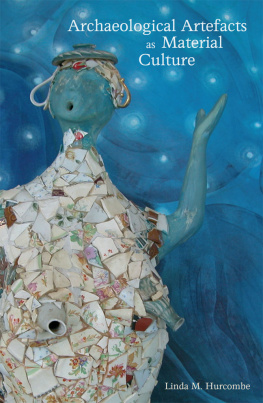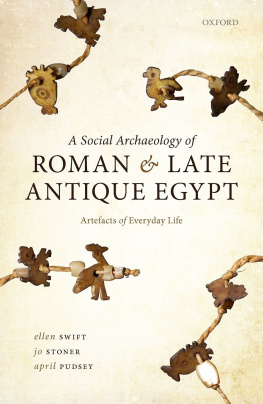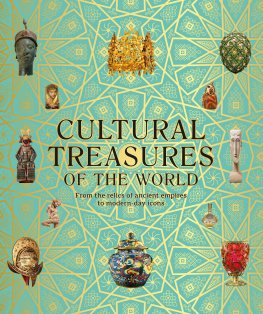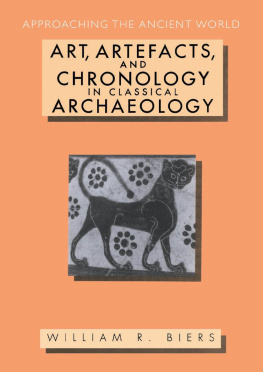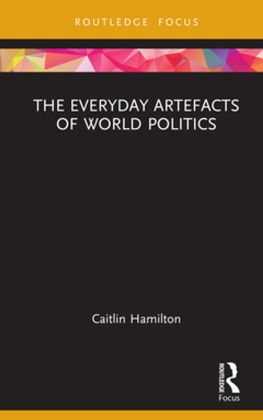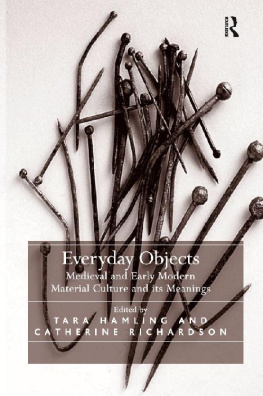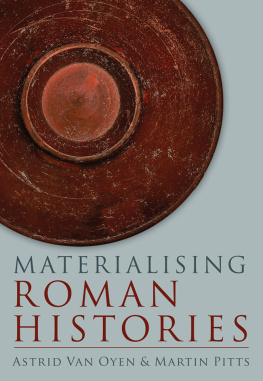Archaeological Artefacts as Material Culture
How can material culture studies enrich archaeology?
This colourful book combines practical and theoretical information to provide a fresh approach to analysing and interpreting artefacts. In its study of the used and modified objects unearthed during excavations and surveys, archaeological enquiry is already steeped in material culture: here, Linda Hurcombe shows how an awareness of the discipline can deepen our understanding of the social context of past cultures. She also explores the manner in which objects from the past become part of the present.
Issues of materiality and its perception lie at the heart of her discussion. Examining the characteristics of a full range of raw materials organic, stone, clay and metal and the objects made from them, Hurcombe explains how to approach these materials with a detailed analysis of methods and theories both scientific and sociological. Diverse approaches from a variety of disciplines are brought together, including the most recent research and developments, to provide an holistic overview of the field.
Including over seventy illustrations with almost fifty in full colour, this book not only provides the tools an archaeologist will need to interpret past societies from their artefacts, but will also enable the reader to develop a keen appreciation of the beauty and tactility involved in working with these fascinating objects. This is a book no archaeologist should be without, but it will also appeal to anybody interested in the interaction between people and objects.
Linda Hurcombe is Head of the Department of Archaeology, Exeter University. She has particular interests in a range of artefact studies including stone tools, functional analysis and organic material culture. She has undertaken fieldwork in Pakistan, Britain and Europe and published books on gender and material, cultural and functional analysis.

First published 2007
by Routledge
2 Park Square, Milton Park, Abingdon, Oxon OX14 4RN
Simultaneously published in the USA and Canada
by Routledge
711 Third Ave, New York, NY 10017
Reprinted 2008, 2009
Routledge is an imprint of the Taylor & Francis Group, an informa business
2007 Linda M. Hurcombe
Typeset in Joanna by
Keystroke, 28 High Street, Tettenhall, Wolverhampton
All rights reserved. No part of this book may be reprinted or reproduced or utilised in any form or by any electronic, mechanical, or other means, now known or hereafter invented, including photocopying and recording, or in any information storage or retrieval system, without permission in writing from the publishers.
British Library Cataloguing in Publication Data
A catalogue record for this book is available from the British Library
Library of Congress Cataloging in Publication Data
A catalog record for this book has been requested
ISBN10: 0415320917 (hbk)
ISBN10: 0415320925 (pbk)
ISBN10: 0203068521 (ebk)
ISBN13: 9780415320917 (hbk)
ISBN13: 9780415320924 (pbk)
ISBN13: 9780203068526 (ebk)
ISBN 9781136801990 (ebk)
For Patrick and Matthew
for the pleasure of seeing them learn about things,
how they behave, what they can do,
and, in some cases, what they once were.
Tables
Figures
Colour figures appear between pages 176 and 177
Artefacts allow a tactile and tangible connection between present and past which can be felt, as tangible implies. This is not a whimsical fancy but simply a statement that more of the senses are directly involved with the past a practical as well as a mental engagement with another material world. Having taught students about artefacts and material culture for a number of years, I wrote this book in part to encapsulate something missing from the available literature a sense of materiality and a place where close observation, scientific analysis, and theoretical concepts of material culture could all be brought together. At the time of writing Hodgess 1964 book Artefacts is still on library shelves and in university bookshops, because the factual manual he created as part of the functionalist paradigm of the 1950s still has validity, but it was time to set down a more postmodernist critique of artefact studies whilst not ignoring the practical issues of materials and matter realities. This book is written by somebody who loves objects and the information which can be read from them in the hope that others will feel likewise. I hope that this book speaks to its readers in straightforward ways and perhaps this will make the ideas and concepts within it seem obvious or even simple. If so I will have done my job as communicator and also made a good argument. The ideas brought together here have become more obvious to me over a number of years and were further crystallised by the process of writing them down. I see them as persuasive evaluations of archaeological processes and the value of studying artefacts.
In recent years, I have also realised that the way children learn about things, the material world, and their own material culture are powerful parts of their development and, with them, societys perpetuation and change. I have watched my son, Patrick, explore and learn about the world of things and my close friends son, Matthew, learn about and pass away from the world of things. The objects we touch and transform have a life-cycle as much as we do. Though some objects are transient, others outlast us and stand witness to past human lives. That is what the study of archaeological artefacts is all about.
Linda Hurcombe
Exeter, 2006
This book has had a very long gestation and because of its diversity has benefited from many contacts. I should especially like to thank my parents Betty and Jack for fostering a love of objects from broken clay pipes to antiques, Pat Phillips and Robin Torrence for the chance and guidance to pursue that interest through research, Jane Prendergrast and Pam Jenkin for a wealth of practical and mental support over the years, and Robin Dennell for unfailing constructive criticism and encouragement.
My colleagues at Exeter University have all offered useful comments but Bruce Bradley, Bryony Coles, John Coles, Gill Juleff, Carl Knappett, Val Maxfield, Robert van de Noort, Alan Outram, and Steve Rippon deserve especial thanks for loans of objects, help with images and extensive discussions. Our technicians Sen Goddard and Mike Rouillard have overseen the creation of all of the images and made my concepts of these a reality. In this and other production issues I have been assisted by Adam Wainwright, Chris Smart, and Sue Rouillard. Bryn Morris and Ann Oldroyd also assisted with in-putting the references.
Other colleagues have provided useful information and comment including Marie-Claude Boileau, Richard Fullagar, Annelou van Gijn, Matthew Johnson, Dave Killick, Jennifer Moody, and John Waddell. Graham Langman, Exeter Archaeology Units finds officer for the Princesshay excavations generously discussed his role and the processing of finds on site with me, and Thomas Cadbury of the Royal Albert Memorial Museum and Art Gallery, Exeter, allowed me to borrow some objects for the photographs. Current students on our MA programme in Experimental Archaeology generously lent objects they had made and offered photographs, so particular thanks to Andrew Young, Erin Schroeder, Caroline Jeffra, and Julia Wiecken. Lee Bray also offered comments.
The images form an important contribution to the book, and creating these and obtaining copyright clearance for others has been a major endeavour. The sources of the images are sometimes complex and so these have been listed as part of the captions. However, I should like to thank here all who gave their permission and the helpfulness encountered from so many of you: Piran Bishop and the Devon Archaeological Society, figure 8.6; Bruce Bradley, figure 8.3 pestle and mortar, figure 8.4c and 8.4e, figure 8.8b, figure 9.2b, figure 9.3b and figure 9.3c, figure 9.5; Jacqui Carey, figure 7.17; Bryony Coles, figure 7.13; Adrien Hannus, figure 7.11; Staffan Hyll, Per Karsten and the Swedish National Heritage Board, figure 2.7; Caroline Jeffra, figure 7.14g, figure 9.6a; author and Gill Juleff, figure 10.5, figure 10.6ef, figure 10.7; Gill Juleff, figure 10.8, figure 10.9; Bryony Kelly, figure 9.3e; Carl Knappett, figure 9.2c, figure 9.3d, figure 9.6b, figure 9.12; Valerie Maxfield, figure 7.20c, figure 8.5f; Peter Montanez, figure 7.18i for photograph, annotation by author; the Royal Albert Memorial Museum and Art Gallery, Exeter, figure 7.14f; author, Julia Wiecken and Andrew Young, figure 10.6ad. All the other illustrations are by the author except for figure 5.2 which reproduces Pitt-Rivers 1875 reprinted 1906: plate II.
Next page
